Preserving a centuries-old Bible demands meticulous attention to environmental factors, careful handling, thoughtful display, and tailored storage solutions. This guide outlines bible preservation techniques to help you conserve antique Bibles using rare book preservation best practices.
Understanding the Importance of Bible Preservation
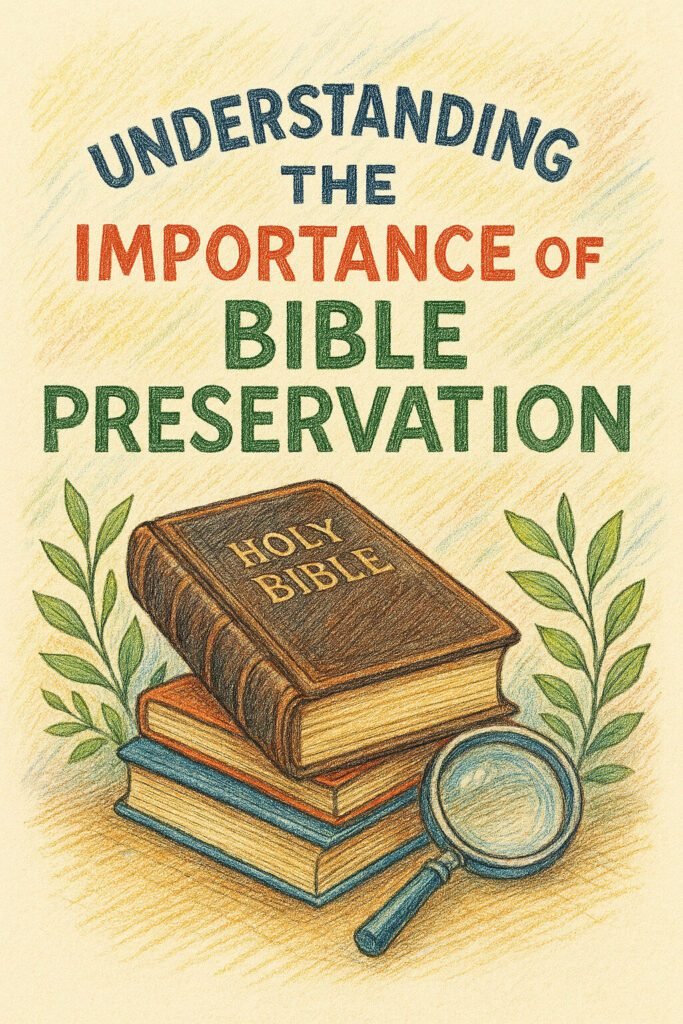
Preserving antiquarian bibles is a task of utmost significance for a multitude of reasons that encompass historical, cultural, and academic perspectives. As unique artifacts, rare bibles hold not only religious value but also serve as important records of societal development, artistic expression, and linguistic evolution. These texts often contain information and insights that are invaluable to scholars, historians, and religious communities alike. Therefore, the preservation of these rare texts is essential to ensure that future generations can access and learn from them.
The deterioration of bibles over time presents significant challenges. Factors such as humidity, light exposure, and physical handling can lead to fading ink, brittle pages, and damaged bindings. Such deterioration can drastically alter or completely obscure the original texts, making them less accessible to those who seek to study them. Consequently, implementing effective bible preservation techniques becomes imperative in preventing the loss of these critical historical documents.
In addition to ensuring the longevity of the physical texts, proper preservation practices also allow for greater understanding and appreciation of the cultural narratives embedded within the pages of these bibles. By conserving antique bibles, we acknowledge the myriad of beliefs and traditions they represent, promoting greater dialogue and understanding across various communities. The stories, teachings, and historical contexts presented in these rare items provide an essential window into the past.
Ultimately, the commitment to conserve antique bibles extends beyond mere maintenance; it reflects a deep respect for the heritage and knowledge these texts carry. By investing in appropriate preservation methods and techniques, we not only safeguard these important works for posterity but also honor the rich historical context they encapsulate. As we move forward in recognizing the importance of these texts, let us ensure we employ rigorous bible preservation techniques to maintain their integrity and significance for generations to come.
Environmental Control Specifications
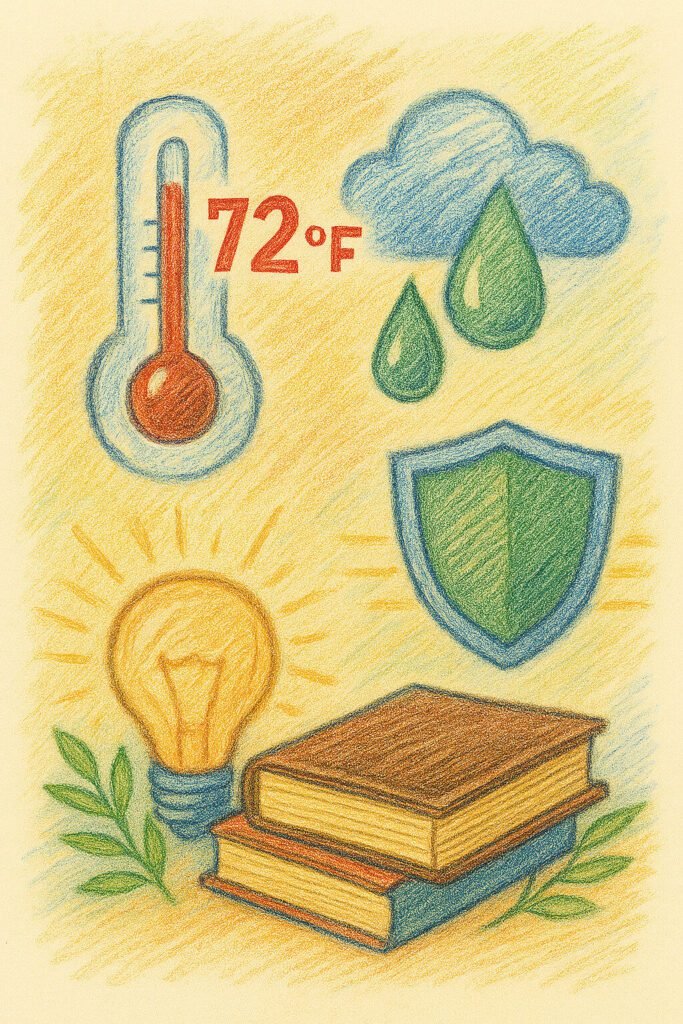
Preserving antiquarian bibles requires careful attention to environmental factors that can significantly affect their longevity and integrity. One of the most crucial aspects to consider is temperature. Ideally, antiquarian bibles should be stored in a cool environment, with temperatures ranging between 65°F to 72°F. Higher temperatures can accelerate the deterioration of paper and bindings, while lower temperatures may not pose a significant risk but could lead to condensation issues.
Another vital factor is humidity; maintaining appropriate humidity levels is essential for the preservation of antique bibles. The optimal relative humidity should be between 45% and 55%. Excessive moisture can lead to mold growth and cause pages to stick together, while too little humidity can result in brittle pages and cracked bindings. Employing a hygrometer can help monitor these levels, allowing for timely adjustments to ensure the environment remains within the ideal range.
Light exposure is another essential consideration. Ultraviolet (UV) light, in particular, can cause fading and deterioration of the inks and bindings used in antique bibles. It is advisable to store these rare books in dark conditions or utilize UV-filtering glass when displaying them. In situations where exposure to natural light is unavoidable, limiting the duration and intensity of light is critical to conserve antique bibles effectively.
| Factor | Recommended Range | Notes |
|---|---|---|
| Temperature | 65–72 °F | Avoid rapid swings that stress bindings and paper |
| Relative Humidity | 45–55 % | Levels above 65 % invite mold; below 30 % causes brittleness |
| Visible Light | ≤5 footcandles (50 lux) | Use low-intensity lighting and limit display times |
| Ultraviolet Light | Minimize; use UV-filter films | UV accelerates paper embrittlement and ink fading |
| Air Quality | Dust-free, low VOC levels | Replace HVAC filters regularly; monitor for pollutants and molds |
Monitoring with dataloggers or thermohygrometers ensures early detection of harmful fluctuations and guides maintenance schedules.
Overall, maintaining a stable environment is paramount to preserving rare books. Fluctuations in temperature and humidity can lead to rapid deterioration, stressing the materials and potentially causing irreversible damage. Therefore, establishing a controlled, stable environment ensures that antiquarian bibles remain intact for future generations to appreciate. Taking these environmental control specifications into account is essential for effective bible preservation techniques.
Proper Handling Procedures
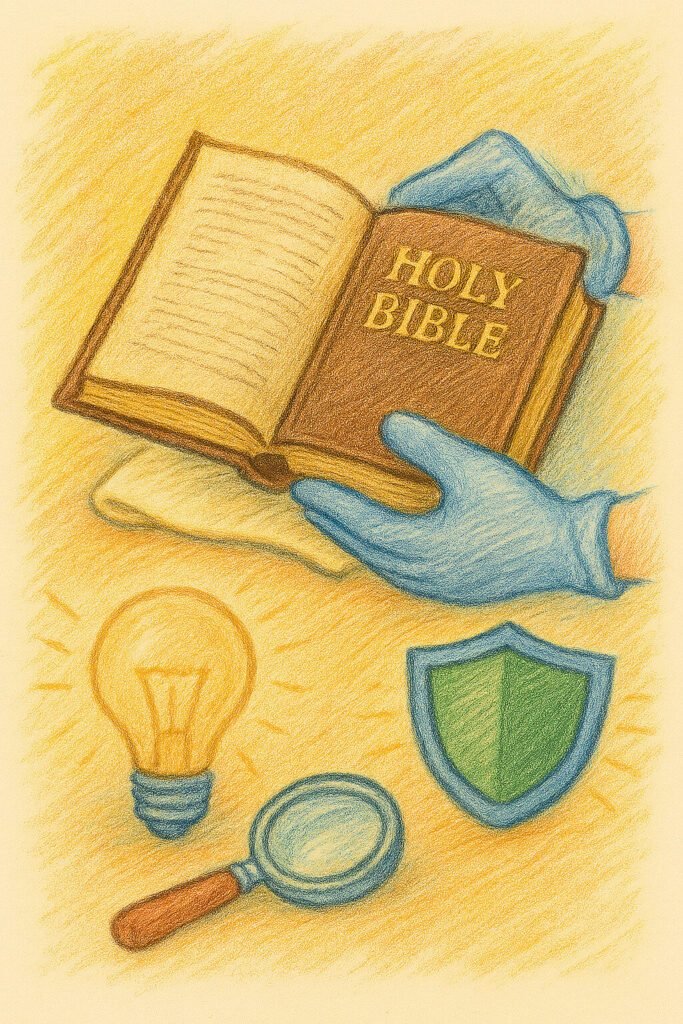
When it comes to the preservation of antiquarian bibles, proper handling procedures play a crucial role in ensuring their longevity and integrity. The physical touch of a person can profoundly affect the condition of these delicate items, making it essential to follow specific guidelines. First and foremost, the use of gloves is strongly recommended during handling. Acidic oils and dirt from our skin can lead to deterioration and staining; thus, clean, dry cotton gloves should be worn at all times. This simple technique is one of the fundamental bible preservation techniques that can significantly mitigate potential damage.
In addition to using gloves, it is vital to support the spine of the bible properly. Many old bibles have fragile spines that can easily crack if not supported during handling. When opening an antiquarian bible, it is advisable to hold the book firmly but gently at the center and to avoid forcing it open too wide. A good practice is to rest the bible on a flat, cushioned surface, allowing its weight to distribute evenly. A book pillow or cradle specifically designed for rare book preservation can provide additional support, ensuring that the spine remains intact.
Moreover, proper page turning techniques are essential as well. Pages should be turned gently by the edges with the thumb and forefinger, minimizing contact with the text block. If pages are particularly fragile, supports like Teflon bone folders can be used to create a safer turning process, reducing wear. It is equally important to avoid using any bookmarks or sticky materials that may leave residue or cause tearing. By adhering to these careful handling techniques, individuals can effectively conserve antique bibles, extending their useful life while allowing for continued appreciation of their historical significance.
Follow these steps:
- Gentle, informed handling prevents tears, detached covers, and skin-oil transfer. Follow these steps when you open or move an antiquarian Bible:
- Schedule professional binding inspections and leather conditioning every 5–10 years to address developing weaknesses and red-rot risks.
- Open covers no more than 115° to avoid overstressing leather and cloth hinges.
- Support the covers with a cradle or two parallel rolled towels placed beneath the covers’ edges.
- Wash and dry hands thoroughly before handling; cloth gloves should be used.
- Never use pressure-sensitive tapes for repairs. Any adhesive treatment should be fully reversible and performed by a professional.
Display Options and Considerations
When it comes to displaying antiquarian bibles, a careful balance must be struck to ensure visibility while prioritizing preservation. Various display options are available, each with its unique advantages and drawbacks. Two primary methods are used: open and closed cases. Open cases provide easy access and visibility, allowing viewers to appreciate the text and illustrations. However, this method exposes the bible to environmental elements such as dust, light, and humidity, all of which can contribute to degradation over time.
Closed cases, on the other hand, are designed to protect the bible from external damage. These enclosures can be climate-controlled, preventing fluctuations in temperature and humidity that could harm the delicate pages. While the protection offered by closed cases is substantial, they can limit the viewer’s engagement and connection with the physicality of the book. This leads to considerations regarding the intended purpose of the display—be it for educational purposes, exhibition, or personal enjoyment.
Lighting is another critical factor that must be taken into account when displaying rare bibles. Proper lighting can enhance visibility and draw attention to intricate details, such as illustrations and typography. Natural light, while appealing, can cause fading of ink and paper, thus it is advisable to use UV-filtered lighting systems. Such environmental management contributes significantly to the long-term durability of the texts, making it an essential element of bible preservation techniques.
Additionally, the choice of display location is vital. Strategically placing the bible in a stable environment away from direct sunlight, high pedestrian traffic, and humidity sources can significantly prolong its lifespan.
Exhibiting an antique Bible can showcase its artistry but also exposes it to light, dust, and physical strain. Evaluate these display methods:
| Method | Pros | Cons |
|---|---|---|
| Clamshell Box | Custom-fit, blocks light and dust; can be decorative | Obscures spine and cover details during display |
| Metal-shelving Line | Inert surface avoids acid migration from wood | May lack the warmth of wood aesthetics; requires lining |
| Acrylic/Museum Case | Seals out dust, offers UV protection, wall-mountable | High cost; limited airflow must be monitored for humidity |
| Open Book Stand | Ideal for temporary exhibit of pages; protects spine | Not suitable for long-term display; light exposure risk |
Always shield displayed Bibles from direct sunlight and rotate exhibited items to limit cumulative light damage. Use UV-filter films on cases and glazing to further reduce fading.
In summary, careful consideration of the displaying conditions and methods is crucial when planning to display and conserve antique bibles effectively.
Storage Solutions for Various Conditions
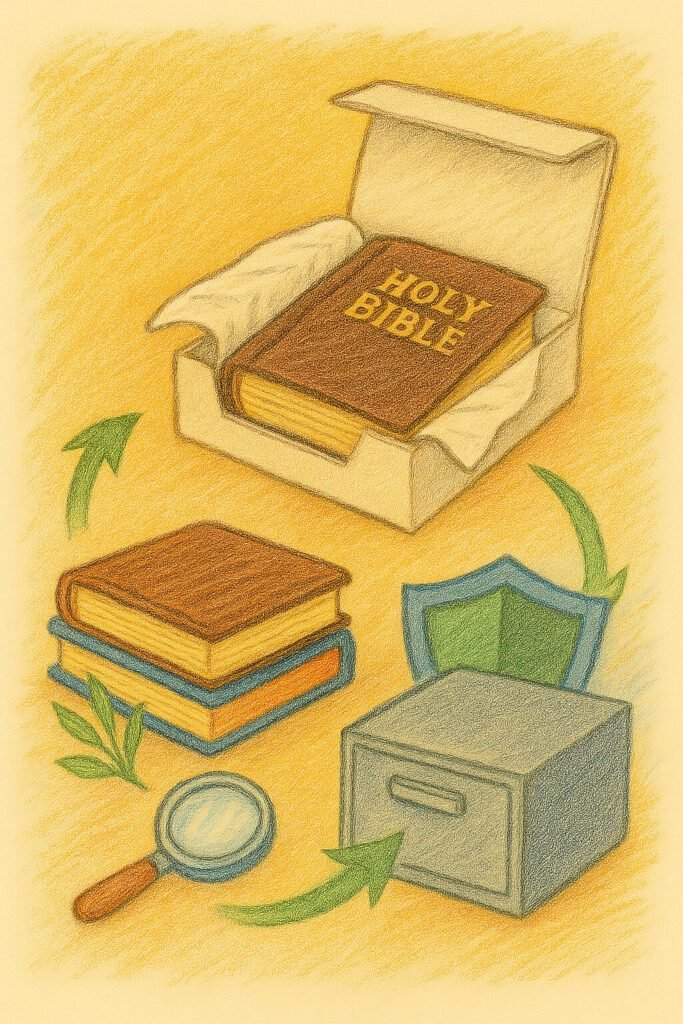
When it comes to the preservation of antique bibles, the right storage solutions play a critical role in conserving integrity and longevity. The environmental conditions surrounding the storage of rare books can significantly influence their condition over time. Therefore, understanding how to store these sacred texts is pivotal for any collector or enthusiast.
Archival boxes and folders are essential materials for housing bibles, as they provide a protective layer against physical damage and environmental factors. Acid-free materials are particularly important, as they help prevent chemical reactions that may degrade the paper and bindings over time. For collectors who wish to ensure their bibles remain intact, investing in high-quality storage solutions made from durable and non-reactive materials is essential.
The location of storage should also be a consideration. For instance, storing bibles in a climate-controlled environment can help mitigate risks associated with fluctuating temperature and humidity levels that could lead to mold growth or deterioration of paper. A consistent environment with controlled moisture levels will help in safeguarding the fragile materials of antique bibles. Storing rare books in areas away from direct sunlight is crucial, as UV rays can fade and weaken the pages over time.
Furthermore, different climatic conditions can dictate additional precautions. In areas with high humidity, desiccants can be used inside storage boxes to absorb excess moisture, helping to maintain an optimal balance. Conversely, in dry regions, it may be beneficial to use humidity control products to prevent the paper from becoming brittle. Ultimately, the aim is to create a safe haven for these invaluable texts, employing effective bible preservation techniques tailored to each unique environment.
Good guidelines for Proper Storage:
- Proper storage adapts to the size of your collection, building environment, and local climate:
- Digitize loose inserts, clippings, and genealogical entries; store originals in individual acid-free folders to reduce handling of the main volume.
- Store Bibles flat when possible to prevent spine sagging; if shelving upright, use bookends to keep volumes vertical without leaning.
- Line shelves or boxes with acid-free barrier boards or polyethylene sheets to isolate wood acids from leather and paper.
- Encase each Bible in an archival drop-front or clamshell box with unbuffered tissue interleaves for written pages, especially notes or family records.
- In hot, humid climates, prioritize air-conditioned closets or custom cabinets with built-in climate control; in arid regions, small humidifiers can prevent paper desiccation.
Maintenance and Regular Checks
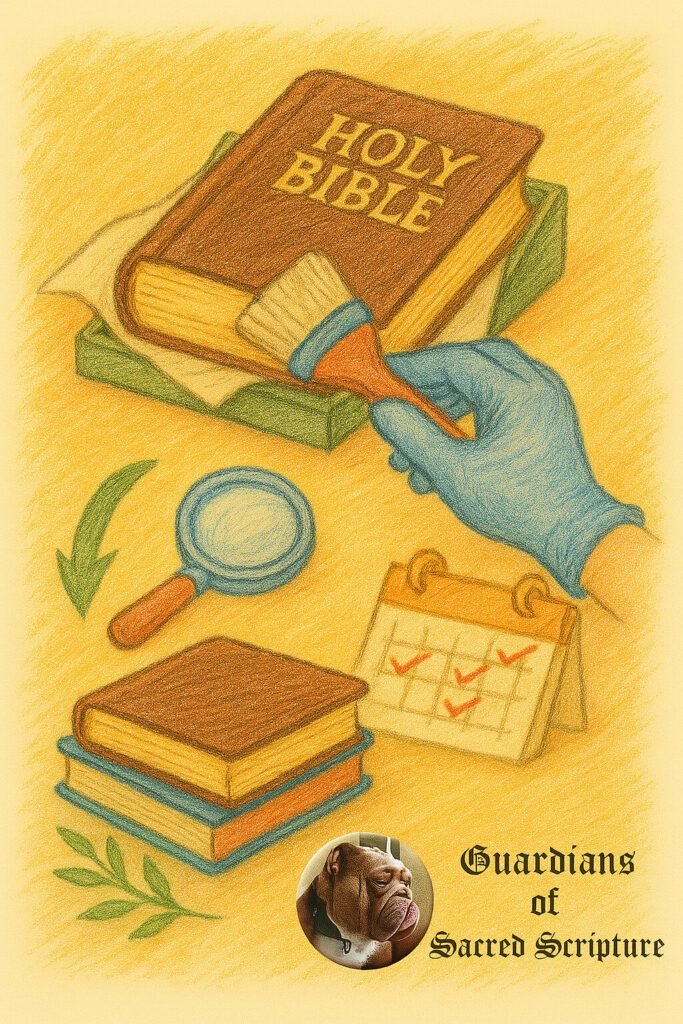
Proper maintenance and regular checks play a critical role in the preservation of antiquarian bibles. These cherished relics of history require ongoing vigilance to ensure their longevity. Establishing a consistent routine for inspecting and maintaining these texts not only helps to preserve their physical condition but also enhances the reader’s experience. This section outlines essential steps to implement an effective maintenance strategy.
First, it is vital to create a safe environment for storing your bibles. Avoid exposure to direct sunlight, which can cause fading and deterioration. Instead, choose a cool, dry location that maintains stable humidity levels. Consider using acid-free boxes or protective archival materials when storing rare books to prevent physical damage. Regularly check the storage area for signs of pests or moisture, as these can pose significant risks to your collection.
Next, inspect your bibles frequently for signs of wear. Look for loose pages, frayed edges, or weakened bindings. These indicators can signify that it’s time for minor repairs or a more thorough conservation plan. If you notice issues, address them promptly to prevent further degradation. Simple maintenance tasks may involve carefully realigning pages or re-gluing loose bindings, while more severe cases might require the expertise of a professional conservator.
Additionally, routinely cleaning the surface of your Bibles can help maintain their condition. Use a very soft brush or microfiber cloth to gently remove dust and dirt. Avoid using water or cleaning solutions, as these substances can cause irreparable harm to the delicate materials. Rather, familiarize yourself with best practices in rare book preservation to ensure you employ the appropriate methods.
By incorporating these maintenance and regular check practices, you can greatly enhance the chances of conserving antique bibles for future generations. Establishing a routine for inspecting both the physical integrity and the environment of these significant texts is indispensable in addressing potential issues before they escalate. This proactive approach serves not only to protect the investment made in these unique works but also to honor their historical value as treasured artifacts.
Common Deterioration Issues and Remedies
Antiquarian bibles, cherished for their historical and cultural significance, are susceptible to various deterioration issues that can compromise their integrity and longevity. Understanding these common problems is crucial for anyone looking to conserve antique bibles effectively.
One prevalent issue affecting old bibles is mold growth, often fueled by high humidity and insufficient airflow. Mold can deteriorate the paper and binding materials, causing irreversible damage. To mitigate this issue, it is advisable to store bibles in a controlled environment with stable temperature and humidity levels. If mold is already present, it is essential to act quickly. Gentle brushing, combined with the use of low-concentration ethanol or specialized mold remediation solutions, can help eliminate the growth. However, caution is paramount as aggressive treatment may further damage the delicate pages.
Another significant concern is insect damage, particularly from pests such as booklice, silverfish, and moths. These insects are attracted to the organic materials found in bibles. Identifying an infestation usually involves looking for distinct signs, such as frayed pages or the presence of tiny droppings. To combat this, regular inspections and preventive measures, such as sealing Bibles in airtight containers or using desiccant packets, can help deter pests. In the event of an infestation, professional pest control services that specialize in rare book preservation may be necessary to properly address the issue without harming the bible.
Additionally, many antique bibles suffer from paper brittleness due to age, environmental factors, and improper handling. To prevent further degradation, readers should avoid excessive handling and always use clean, dry hands or gloves when touching delicate pages. Conservation techniques such as the use of acid-free archival boxes and protective sleeves can provide significant preventive measures. For bibles already facing brittleness, consulting a professional specializing in antique bibles is recommended to explore options like paper repair or re-binding, ensuring the bible’s preservation for future generations.
Final Thoughts on Bible Preservation Techniques
Preserving antiquarian bibles is not merely a hobby; it is a responsibility that entails an awareness of various bible preservation techniques. As the custodians of these historical artifacts, owners must recognize the value and significance embedded within the pages of their collections. Antique bibles serve as windows into the past, revealing insights about the cultural, religious, and societal norms of their respective eras. Therefore, it is essential to employ careful measures to conserve antique bibles effectively.
Awareness of preservation techniques is fundamental to maintaining the integrity of these rare volumes. This includes understanding climate control, proper storage solutions, and essential handling practices to avoid unnecessary wear and tear. Utilizing acid-free materials, maintaining consistent temperature and humidity levels, and employing protective measures against pests and environmental damage are critical components of rare book preservation. Furthermore, digitization may also serve as a viable method to ensure that the content of these bibles is accessible to future generations without risking the physical copies.
Ultimately, the commitment to protecting these volumes goes beyond their physical upkeep; it embodies a respect for their historical significance. It is the duty of each owner to adapt and apply the knowledge acquired through this guide. This not only fosters the longevity of individual collections but also contributes to the broader preservation of our shared cultural heritage. By implementing effective bible preservation techniques, collectors can savor the profound narratives contained within each antique bible while ensuring their preservation for future scholars and enthusiasts. As we draw this discussion to a close, let us collectively strive to guarantee that these treasures endure the test of time.

